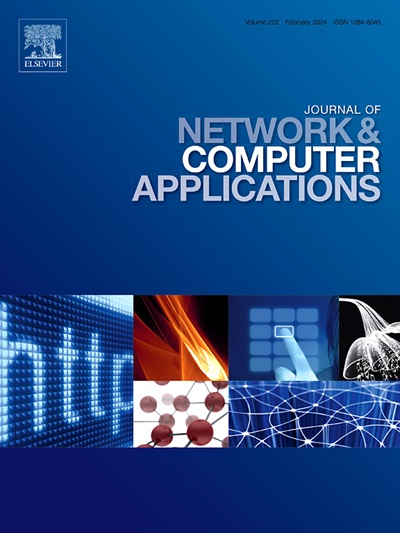ZBR: Zone-based routing in quantum networks with efficient entanglement distribution
IF 8
2区 计算机科学
Q1 COMPUTER SCIENCE, HARDWARE & ARCHITECTURE
引用次数: 0
Abstract
The quantum network aims to establish connections among multiple quantum nodes, supporting various innovative applications. Many of these applications necessitate the sharing of entangled pairs among communicating parties. However, the inherent nature of entanglement leads to an exponential decrease as the distance between quantum nodes increases. This phenomenon makes it challenging for entangled pairs shared by quantum nodes to fulfill end-to-end entanglement routing requests, resulting in significant communication loss between these nodes. To tackle this challenge, we proposed Zone-Based Routing (ZBR) for quantum networks, which effectively handles end-to-end entanglement distribution. The core concept of zone-based routing involves creating zones containing source and destination pairs to facilitate effective entanglement distribution within each zone. We introduce Zone-Based Path Selection (ZBPS) and Zone-Based Entanglement Purification (ZBEP) algorithms to implement this approach. The main idea of the ZBPS algorithm is to select a routing path based on the flow capacity of adjacent links. Whereas, the ZBEP algorithm focuses on entanglement fidelity purification of the chosen path. These algorithms collectively maintain entanglement distribution, high fidelity, and throughput in quantum networks. Our simulation results demonstrate a significant improvement in entanglement distribution within quantum networks compared to traditional entanglement distribution routing designs.
基于区域的高效纠缠分布量子网络路由
量子网络旨在建立多个量子节点之间的连接,支持各种创新应用。许多这样的应用程序需要在通信各方之间共享纠缠对。然而,纠缠的固有性质导致随着量子节点之间距离的增加而呈指数减少。这种现象使得量子节点共享的纠缠对难以满足端到端纠缠路由请求,导致节点间通信损失严重。为了解决这一挑战,我们提出了量子网络的基于区域的路由(ZBR),它有效地处理了端到端纠缠分布。基于区域路由的核心概念包括创建包含源对和目的对的区域,以促进每个区域内有效的纠缠分布。我们引入了基于区域的路径选择(ZBPS)和基于区域的纠缠净化(ZBEP)算法来实现该方法。ZBPS算法的主要思想是根据相邻链路的流量选择路由路径。而ZBEP算法侧重于所选路径的纠缠保真度净化。这些算法共同维护量子网络中的纠缠分布、高保真度和吞吐量。我们的仿真结果表明,与传统的纠缠分布路由设计相比,量子网络中的纠缠分布有了显著的改善。
本文章由计算机程序翻译,如有差异,请以英文原文为准。
求助全文
约1分钟内获得全文
求助全文
来源期刊

Journal of Network and Computer Applications
工程技术-计算机:跨学科应用
CiteScore
21.50
自引率
3.40%
发文量
142
审稿时长
37 days
期刊介绍:
The Journal of Network and Computer Applications welcomes research contributions, surveys, and notes in all areas relating to computer networks and applications thereof. Sample topics include new design techniques, interesting or novel applications, components or standards; computer networks with tools such as WWW; emerging standards for internet protocols; Wireless networks; Mobile Computing; emerging computing models such as cloud computing, grid computing; applications of networked systems for remote collaboration and telemedicine, etc. The journal is abstracted and indexed in Scopus, Engineering Index, Web of Science, Science Citation Index Expanded and INSPEC.
 求助内容:
求助内容: 应助结果提醒方式:
应助结果提醒方式:


